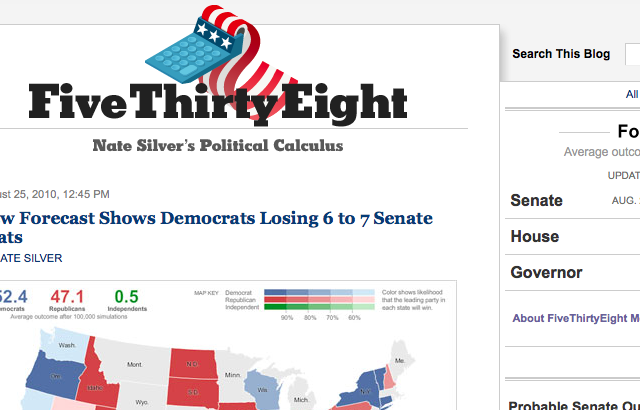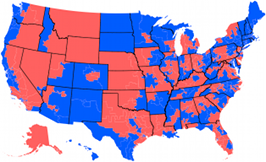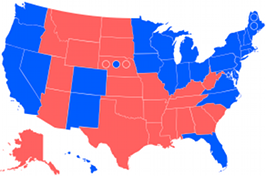Nate Silver at the New York Times suggested yesterday that generic ballot polling might underestimate how well the Democrats will do in November.
Henry Olson at NRO countered by describing how it might shade the other way.
I think it’s the best tool we’ve got, and partisan bias is somewhere in the middle. Here’s why.
I’m not going to describe in depth what Silver and Olson say; the articles are freely available online in their entirety. I will summarize each side, though.
Silver says that the Democrats could do better than the poll says because specific candidates in one district might be liked more than the candidate’s party in general. He takes a long way around to get to there, and has to spend paragraphs apologizing for his example not being quite on point, but the point is sound.
Olson points out in contrast tha individual polling will skew toward the incumbents thanks to basic name ID issues as challengers have to wait until after the primary to become known as the party candidate.
These are both true points. But what’s important to know is that these two issues affect both parties. Republican incumbents should be underestimated in national generic polling, and challengers from the Democrats should be overestimated in the generics. For the most part, the partisan effects of the challenger/incumbent effects should tend to balance out in a national sum.
There are more Democrats than Republicans in the House, so there are more of an incumbency effect on that party, but there’s another effect that neither Olson nor Silver pointed out: many of the Democrats that Republicans are looking to defeat were only elected in 2006 or 2008. These are not Democrats who have established themselves as institutions in their districts, and these districts in some cases in fact have long traditions electing Republicans.
Further, there’s another big reason I don’t trust the local House polling: Generic ballots tend to be designed and executed by nationally respected polling experts, but local House polling is so often organized by the local media. Sometimes the newspaper or television managers know who to hire and how to poll, but sometimes they don’t. They’re media experts, not polling experts. It’s not their job, but all too often rely on them without regard for the their expertise or lack of it.
There are so many factors that can affect a poll: screening down from the adult population, question wordings, question orders, name rotations, randomization, and more. I trust more the known quantities of the national generic ballots, than the erratic seat-by-seat polling we get in the House. That is why I use the generic ballots with the Swingometer, despite its known limitations. It’s the best way I know of to handle 435 races in a clear and consistent way.



 House of Representatives Swingometer
House of Representatives Swingometer Electoral College Swingometer
Electoral College Swingometer
The other factors that favor Republicans are:
1) Democrats seem to be slightly more packed into safe districts (perhaps as a way of safeguarding minority seats).
2) The generic polls almost always under represent Republicans by about 3%. So if the average is R+6 then I suspect we’ll see +9 Republican.
“For the most part, the partisan effects of the challenger/incumbent effects should tend to balance out in a national sum.” In a year where there is a net swing of 10-20 or less votes this would be true. But this year the # of Republican incumbents facing a credible challenge can be counted on 2 hands at most. Incumbent Dems facing credible challenges must be a hundred or so. So, no, they don’t balance out. My old college friend Henry is right! Not mention the underpolling of Repubs which you point out.